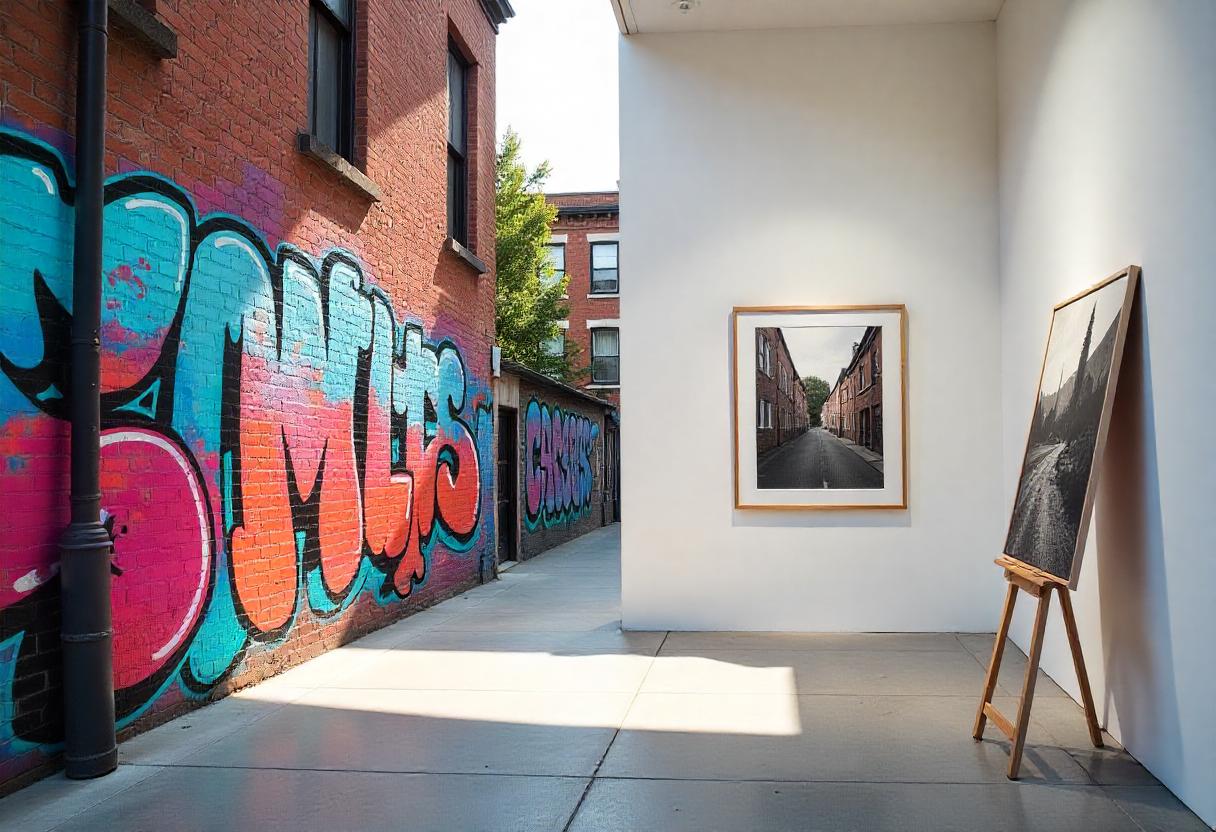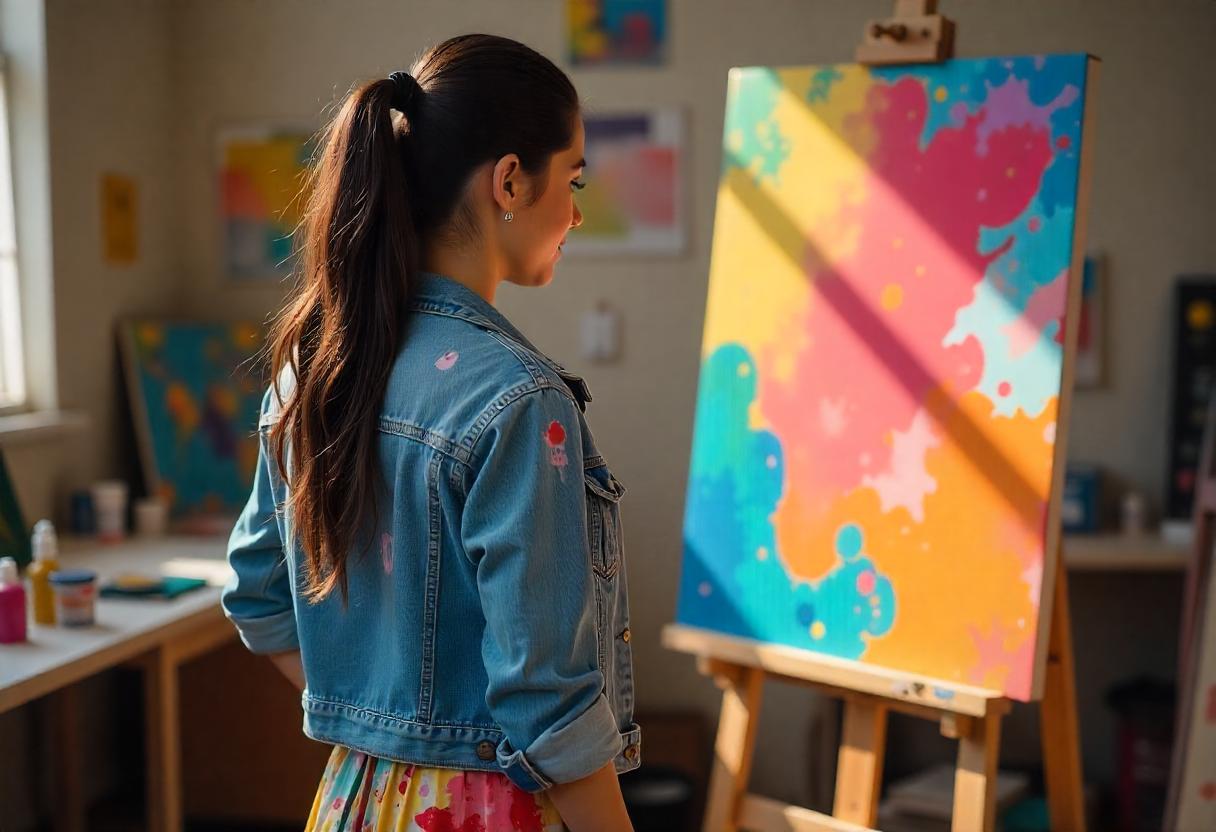Why a Fine Arts Degree is More Than Just Painting Pictures
Are you someone who has always believed that Fine Arts is all about painting? Well, this is a common misconception among many people who are not well aware of the Arts field. Fine Arts actually comprise a lot more than just painting. In fact, it is among the most creative and dynamic courses that can help an individual cultivate discipline, critical thinking, and understand multiple cultural narratives of the world.
In this blog, we will explore the multiple ways in which a Fine Arts Degree can be useful in modern times. We will discover the broader scope of a Fine Arts Education and why individuals must opt for it to get ready for an exciting career, while also unleashing their creativity.
Understanding the Versatility of a Fine Arts Degree
If you are someone who has ever considered taking up a creative field, then a Fine Arts Education can be a very versatile option. It can give you exposure to diverse disciplines and mediums of art. You can learn multiple creative skills beyond painting. For example, sculpting, screen printing, art history, digital art, photography, performance art, mixed media, and much more. Not only tactical skills, but you can also explore new ways to unleash your creative freedom, network with interesting individuals, and get mentorship from artists in your field.
There is also a misconception that a Fine Arts Education doesn’t give you much scope in your career. However, that’s only because of the limited awareness. With this course, you can build a solid foundation to work in a variety of interesting fields, such as education, art therapy, graphic design, museum curation, illustration, and art conservation. Just like any other course, a Fine Arts Degree opens up a variety of options.
Developing Critical Thinking and Problem-Solving Skills
Do you want free career counseling?
Ignite Your Ambitions- Seize the Opportunity for a Free Career Counseling Session.
- 30+ Years in Education
- 250+ Faculties
- 30K+ Alumni Network
- 10th in World Ranking
- 1000+ Celebrity
- 120+ Countries Students Enrolled
Now, many of you might have a better understanding of Fine Arts. But is it just about creating beautiful art in different forms? Not really. It is more about interpreting other art forms and expressing yourself through a variety of concepts and imagery. As you perceive and learn about multiple art movements, artists, and their styles, you also develop critical thinking and problem solving skills. You learn to evaluate ideas, feelings, and factual information—to express your own unique voice.
The multiple facets of Fine Art give you the unique cognitive ability to solve problems in a variety of real-life scenarios. You also learn to foster emotional intelligence, which helps you better understand human-beings. As a result, you are able to better connect with individuals and work with them.
Cultivating Creativity and Innovation
If you are looking to develop skills like creativity and innovation, Fine Arts can be a very useful degree. We are all aware of how competitive the world of creativity can be. There is always the need to create something better and more innovative. Consider not only the aesthetic visuals but also the marketing campaign or product design. One needs to accept the challenges that come along and think outside the box.
Book Now →
Read Also: Beyond the Lines: Exploring Creativity and Expression in Fine Arts
Interpreting such difficult requirements and creating your own work involves a lot of experimentation, risk-taking, and pushing your own boundaries. Fine Art individuals, however, are much more capable of doing this because of their open mindset and rigorous way of working. Their artistic practice makes them capable of tackling multiple challenges and creating something extraordinary.
Connecting Art to Society and Culture
Art is always evolving with the times. Hence, any study of art is all about deep diving into the societal and political issues of the times. Great artworks are not only visually beautiful but also a reflection on contemporary times. No matter what kind of art it is—whether it’s a large canvas painting or a mystical photograph—it will reveal something about the artist and, thereby, also about what issues influenced the artist. Studying art gives you a profound lens into understanding the world through the artistic lens.
Do you want free career counseling?
Ignite Your Ambitions- Seize the Opportunity for a Free Career Counseling Session.Therefore, it’s obvious that Fine Art students must be aware of the societal and cultural relevance of multiple artworks. They also have a deeper understanding of the underlying aspects of contemporary issues that may not be visible to the common layman. They have the ability to challenge what may be considered normal for everyone. They can take an introspective lens on prevalent practices and contribute to cultural conversations.
From Studios to Startups: The Hidden Skills Revealed
A Fine Arts degree has been rather underestimated given the wide scope and deep learning of humans and society offered by the course. The course can fine-tune an individual to create powerful artistic expressions in and out of the studio. Many fine art students are better capable of tackling the everyday challenges of life; this could be anything related to family, relationships, or careers.
Former art students have a great ability to have a deeper perception of things in life. They are also open to taking on challenges and practicing hard work to achieve goals. Hence, they build up the entrepreneurial skills to build startups and create new solutions. Here are some of the important skills that Fine Arts can help you build:
- Critical thinking and problem-solving: By analyzing artworks, interpreting concepts, and devising creative solutions, art students get much better at problem solving in everyday life.
- Collaboration and communication: In Fine Arts, you are supposed to work with mentors and fellow students to create new art and interesting projects. Hence, teamwork comes up very naturally. You also get to connect with diverse audiences.
- Adaptability and innovation: Through this course, students can learn a lot about experimenting with new mediums and tools. They also acquire the ability to adapt to current trends and think creatively.
- Self-discipline and time management: Most importantly, a Fine Arts student is very dedicated to project deadlines. With proper training and guidance, they are able to achieve high standards and show great commitment to their work.
Read Also: A Beginner’s Guide to Understanding Fine Art as a Field
Career Opportunities Beyond the Canvas
As we mentioned before, a Fine Arts education can open the world of career opportunities for you in multiple ways. A diverse education makes you capable of understanding a variety of niche fields. You can also take up specialization in particular fields that you like, as per your convenience. Check out some of these fields below:
- Arts Administration: Fine arts graduates can pursue careers in arts administration, working for museums, galleries, theaters, or arts organizations.
- Design: Many fine arts graduates find success in the field of design. Whether it’s graphic design, interior design, or product design, their creative abilities are highly valued.
- Education: Teaching is another rewarding career path for fine arts graduates. They can become art teachers at schools, colleges, or community centers, inspiring the next generation of artists.
- Advertising: Advertising agencies often seek out fine arts graduates for their creativity and visual storytelling abilities. They can work as art directors, graphic designers, or creative directors, developing campaigns for clients across various industries.
- Entertainment Industry: In the entertainment industry, fine arts graduates can find opportunities in fields such as animation, film production, and costume design.
Expert Insights
An English writer and philosopher, John Ruskin rightly said, “Fine art is that in which the hand, the head, and the heart of man go together.” He also talks about how artists can detect and apply everything that they observe in human beings and nature.
Fine arts is truly a multifaceted discipline that can open the minds of individuals. With so many real-world applications, there is no doubt that this is one of the best fields to opt for after 12th grade for all creatives.
How to Enroll Fine Arts Degree
- Provide information on how interested individuals can enroll in a fine arts degree program.
- Include tips for preparing portfolios or applications, if applicable.
There are a variety of fine art courses that are available for students. Whether you want to do a bachelor’s or a master’s, you have a variety of options in India. Before making a choice, explore them all and consider factors such as curriculum, faculty, and facilities. Do check the application process thoroughly because many institutions have specific requirements and deadlines for applying.
If you are thinking that only people who are good at drawing can enroll in a fine arts program, you are wrong! Yes, you do need to have a creative mindset, and you can show that in your portfolio. You can include artworks like sketches, mixed media, digital art, and anything that can be produced in a physical form. If the application process mentions any guidelines, make sure that you follow them.
Apart from a portfolio, you may also need LORs and application essays. There may be a standard entrance test or an interview. Make sure that you give them some time to practice properly to achieve your desired institute.
Conclusion
We hope that this blog has given you a deep analysis of this interesting course. Fine Arts degree is quite unique and offers a dynamic world of knowledge for any individual. It is definitely a great choice if you are a budding artist, but it will also give you a variety of options for many other interesting careers as well.
No matter what your creative style, you can learn more with a Fine Arts degree. Start your journey to discover the ideal course for you from AAFT School of Fine Arts.
FAQs
Is a Fine Arts degree only for those who want to be artists?
Not at all! A Fine Arts degree is for anyone who wants to learn about new art forms, their cultural implications, and contemporary times through a unique lens.
What jobs can I get with a Fine Arts degree besides being an artist?
Fine arts graduates can pursue careers in arts administration, design, education, illustration, advertising, and more. They may become gallery directors, graphic designers, art teachers, illustrators, or art therapists. Other paths include art sales, freelance artistry, conservation, and roles in the entertainment industry, such as animation or costume design.
What are the most important skills I need to succeed in a Fine Arts program?
Key skills for success in a Fine Arts program include creativity, technical proficiency, critical thinking, self-discipline, and effective communication. These skills enable students to express themselves artistically, engage with diverse perspectives, and navigate the challenges of the art world.
Is a Fine Arts degree worth the cost?
Yes, while a Fine Arts degree may seem costly, it is definitely worth the cost. You get to learn a variety of art forms as well as find your specialization. You also get exposure to a wide network of successful creatives in different industries. Many institutes also offer scholarships and financial aid for selected students.

AAFT has been providing the world with limitless creativity and expression since 1993! Through a dynamic and industry-driven curriculum, AAFT provides engaging and captivating articles to persuasive blogs and empowers its readers to explore diverse avenues of creative media education-related content.








